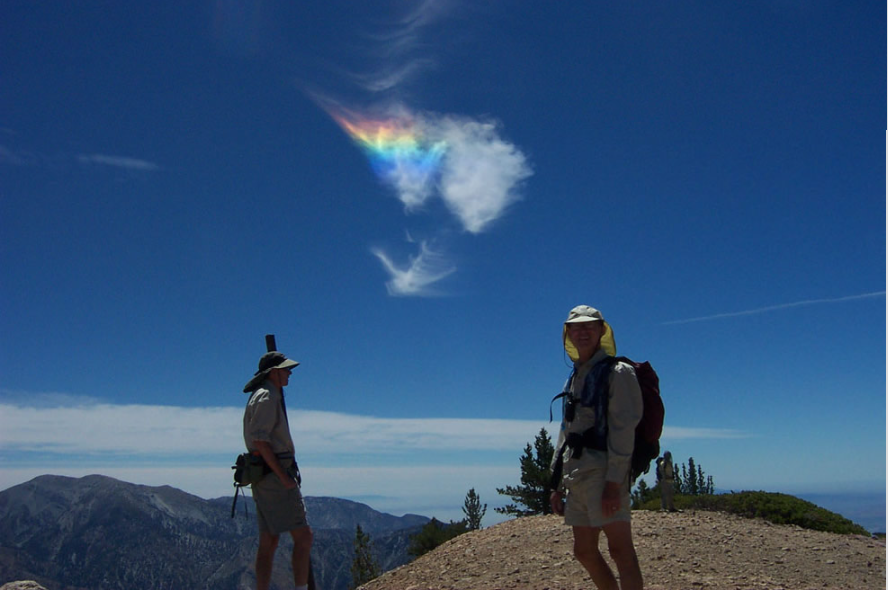Circumhorizon Arc
Circumhorizon Arc: A Phenomenal Atmospheric Optics Display
The world of atmospheric optics never ceases to amaze us with its breathtaking displays of natural phenomena. One such spectacle is the circumhorizon arc, a captivating optical phenomenon that graces the skies with its vibrant colors and ethereal beauty. In this article, we will delve into the intricacies of the circumhorizon arc, exploring its formation, characteristics, and the awe-inspiring sights it presents to lucky observers.
Understanding the Circumhorizon Arc
The circumhorizon arc, also known as the "fire rainbow," is an optical phenomenon that occurs in the Earth's atmosphere. It manifests as a vivid, horizontal band of colors stretching across the sky, resembling a rainbow lying flat on the horizon. Unlike traditional rainbows that are formed by water droplets in the air, circumhorizon arcs are created by the interaction of sunlight with ice crystals suspended in cirrus clouds.
Formation of a Spectral Marvel
To witness the enchanting display of a circumhorizon arc, specific atmospheric conditions must align harmoniously. Firstly, the sun must be high in the sky, typically at an angle of 58 degrees or greater. Secondly, cirrus clouds—thin, wispy clouds composed of ice crystals—must be present. As sunlight passes through these ice crystals, it undergoes refraction and dispersion, similar to what occurs in the formation of a traditional rainbow.
The Prismatic Symphony of Colors
When sunlight enters an ice crystal at a specific angle, it separates into its component colors through dispersion. This process results in the formation of a multitude of colors within the cirrus cloud, creating a breathtaking display of vibrant hues. The colors typically range from deep reds near the top of the arc to vibrant blues near the bottom. However, the exact colors observed can vary depending on the observer's location and atmospheric conditions.
An Elusive Marvel
Although the circumhorizon arc is a mesmerizing spectacle, it is relatively rare to witness. The unique combination of factors required for its formation limits its occurrence to specific latitudes and seasons. Additionally, the circumhorizon arc can only be observed when the sun is at a sufficiently high angle in the sky, usually between late spring and early summer.
Geographic Considerations
Due to the specific requirements for a circumhorizon arc to form, its visibility is restricted to regions between approximately 55 degrees north and 55 degrees south of the equator. These latitudes encompass parts of North America, Europe, Asia, Australia, and South America. Observers residing outside these latitudes may be fortunate enough to witness this captivating phenomenon while traveling to these regions during the appropriate seasons.
Capturing the Wonder
Photographing a circumhorizon arc can be a challenging endeavor due to its large size and elusive nature. The vast expanse of the phenomenon often extends across a significant portion of the sky, making it difficult to capture its entirety within a single frame. Additionally, its fleeting presence demands swift action from photographers to immortalize the magical moment before it dissipates into thin air.
Awe-Inspiring Sightings
Despite its rarity, those fortunate enough to witness a circumhorizon arc firsthand are treated to an awe-inspiring visual feast. The vibrant colors stretching across the sky evoke a sense of wonder and amazement. As the arc dances gracefully above, it fills onlookers with a sense of tranquility and reverence for the natural world. Each sighting of this breathtaking phenomenon is a reminder of the beauty and complexity that exist within our atmosphere.
Unveiling Nature's Artistry
The circumhorizon arc serves as a testament to the intricate interplay between light, ice crystals, and atmospheric conditions. Its existence reminds us of the hidden marvels that surround us daily, waiting to be discovered and appreciated. By unraveling the mysteries behind this captivating optical phenomenon, we gain a deeper understanding of the delicate balance that exists within our atmosphere and the boundless wonders it has to offer.
A Reminder of Nature's Grandeur
In a world filled with constant hustle and bustle, the circumhorizon arc stands as a gentle reminder to pause, look up, and marvel at the natural splendor that surrounds us. As we take a moment to appreciate the magnificence of this atmospheric optics display, we are reminded of the vastness and grandeur of our planet and the infinite beauty that lies just beyond the horizon.

Circumhorizon arcs are so large that sometimes we see only parts of them where they happen to 'light' fragments of cirrus cloud. Ed Johnson (site) captured this one on June 8, 2003 on Mount Baden-Powell, California. Image ©Ed Johnson, shown with permission.
Note: this article has been automatically converted from the old site and may not appear as intended. You can find the original article here.
Reference Atmospheric Optics
If you use any of the definitions, information, or data presented on Atmospheric Optics, please copy the link or reference below to properly credit us as the reference source. Thank you!
-
<a href="https://atoptics.co.uk/blog/circumhorizon-arc-3/">Circumhorizon Arc</a>
-
"Circumhorizon Arc". Atmospheric Optics. Accessed on November 26, 2024. https://atoptics.co.uk/blog/circumhorizon-arc-3/.
-
"Circumhorizon Arc". Atmospheric Optics, https://atoptics.co.uk/blog/circumhorizon-arc-3/. Accessed 26 November, 2024
-
Circumhorizon Arc. Atmospheric Optics. Retrieved from https://atoptics.co.uk/blog/circumhorizon-arc-3/.